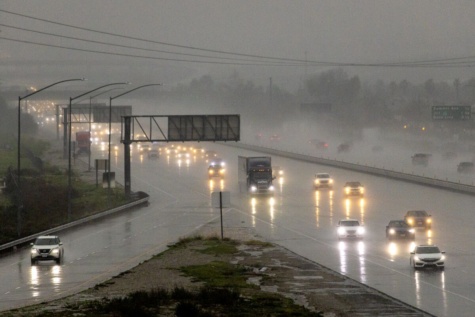
Claire Hedger || Writer
March 17, 2023
What is rain?
Chances are if you asked that question to a Californian, they would not be able to answer.
However, due to the recent fluctuation in southern California’s weather, that question now may be able to be answered. If you haven’t been living under a rock these past few weeks, you would have noticed that there has been a lot more rain this year than any recent year in San Clemente.
“I feel like there’s been at least one rainy day each week this semester,” says junior Sam Westerfeild.

The rainy season in Southern California normally lasts from November through April, with the most rain falling between December and February. However, we have been experiencing rain all the way through March now.
It only takes one look at the insanely green hills surrounding San Clemente to notice we have been getting lots of rain. While the rain is generally thought to be relaxing, junior Brinley Wesch thinks otherwise.
“Most of the time I love the rain, but at school it can become a major inconvenience.”
Brinley is right. Our school is not well designed for rainy weather. And not only that, I would predict that over half the school does not know how to handle this mysterious water we see falling from the sky called rain.
Because of that, I present to you some important tips on how to “survive” the rain (for Californians).
-
- Dress for the weather: put on water-resistant or waterproof clothes, such as an umbrella, a raincoat or jacket with a hood. Cotton clothing should be avoided since it can become uncomfortable and heavy when wet.
- Drive carefully: rain can make roads slick and impair visibility, so go more slowly and give other drivers more room. While driving, turn on your headlights, clean the windscreen, and steer clear of rapid or abrupt motions.
- Take books out of the locker: rain water can seep into lockers, causing water damage to textbooks. This can result in a fee.
- Watch where you are going: Take slow steps and use shoes with adequate traction when walking on wet or slippery terrain to avoid accidents. Avoid going through any standing water since it can be deeper than it seems and may conceal dangers like sharp objects or manholes.
- Keep up with the news: Pay attention to weather news and be aware of any local weather-related advisories, such as flood warnings. Consider creating an emergency plan if you live in a flood-prone location.
There you have it, the perfect guide for how to survive this mysterious, bipolar California weather. Good luck everyone, and stay safe!

Leave a Reply